3-Day Casablanca Romantic Getaway: Hidden Gems and Culinary Delights
Casablanca, Morocco
3 days
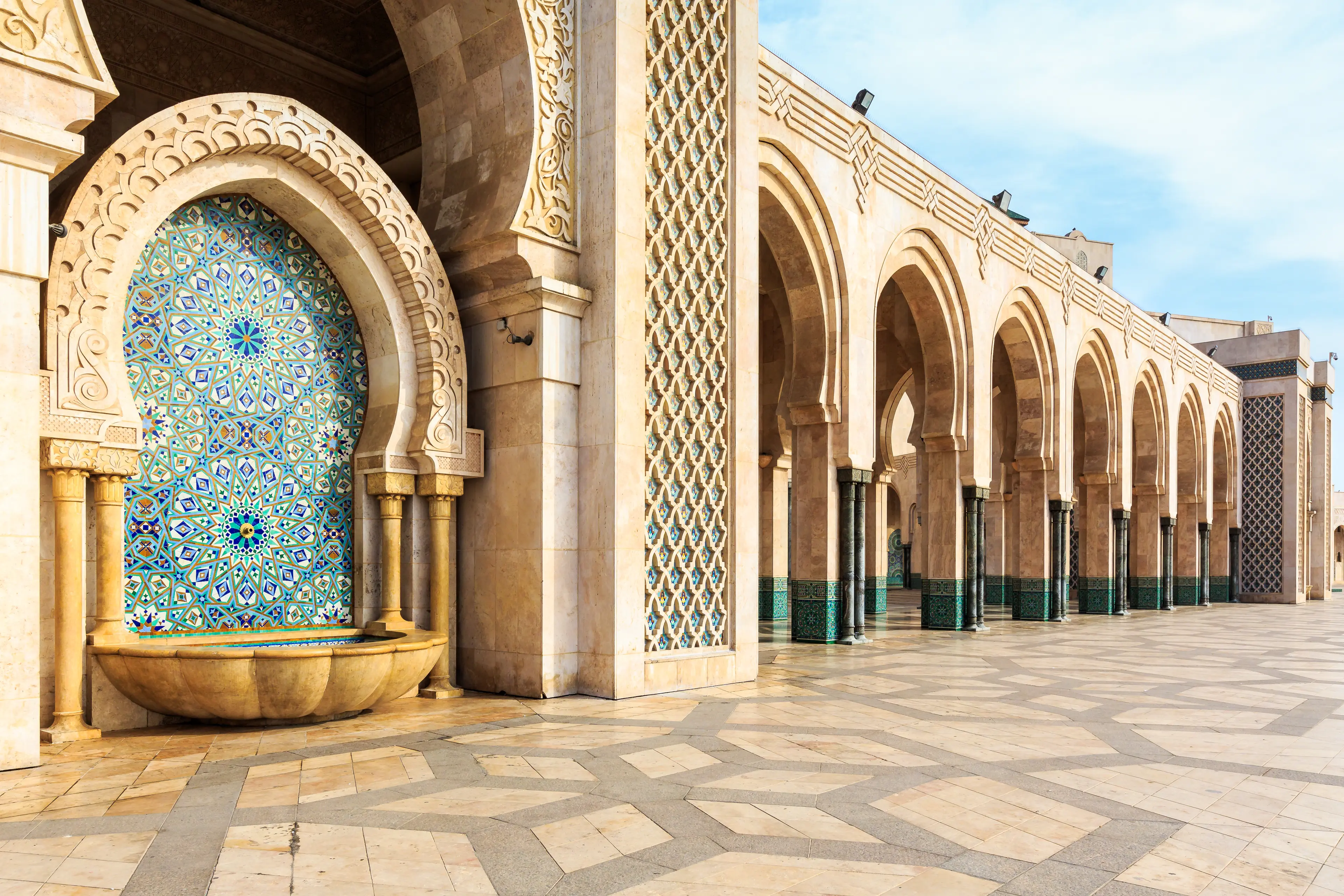
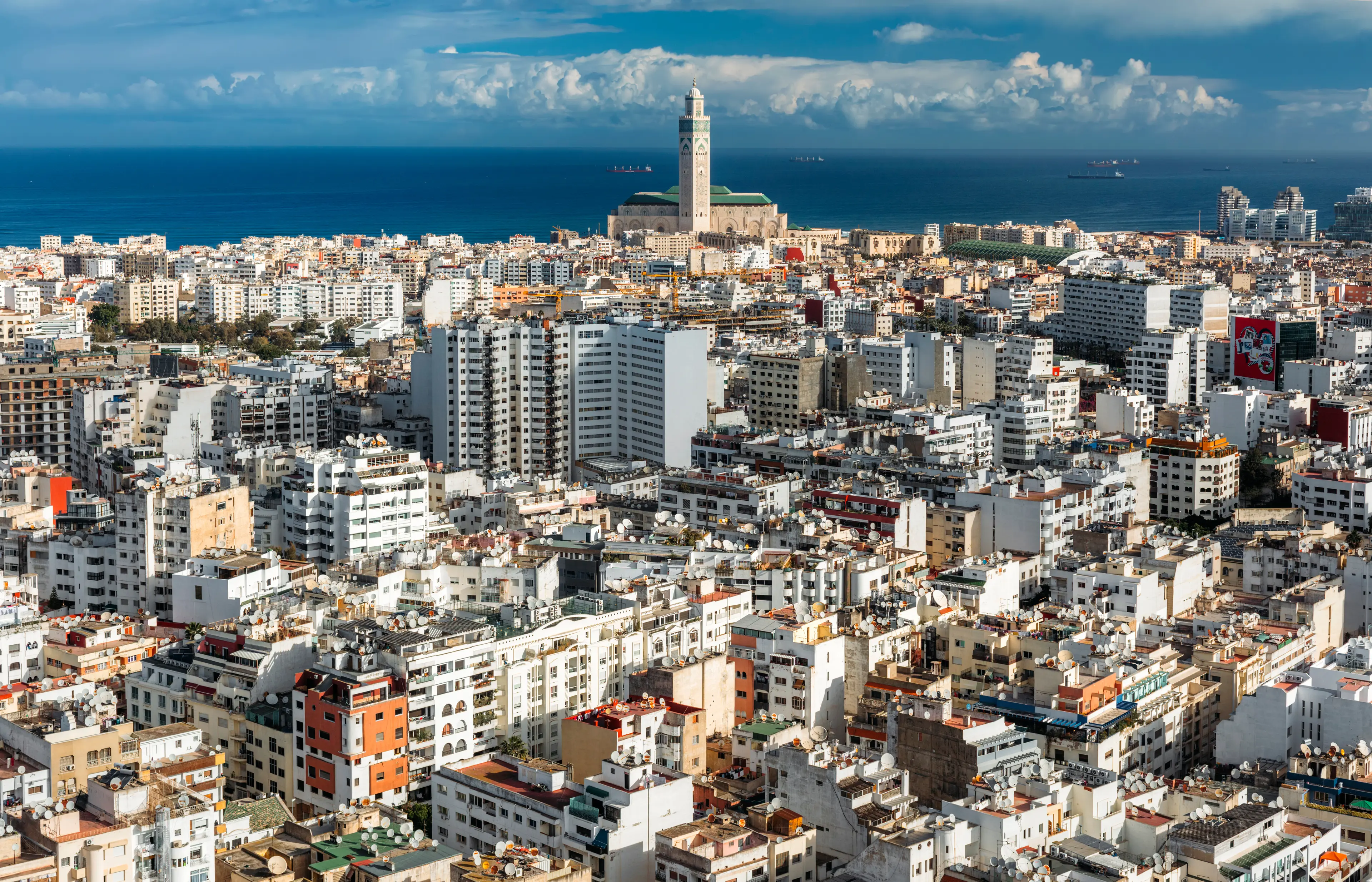
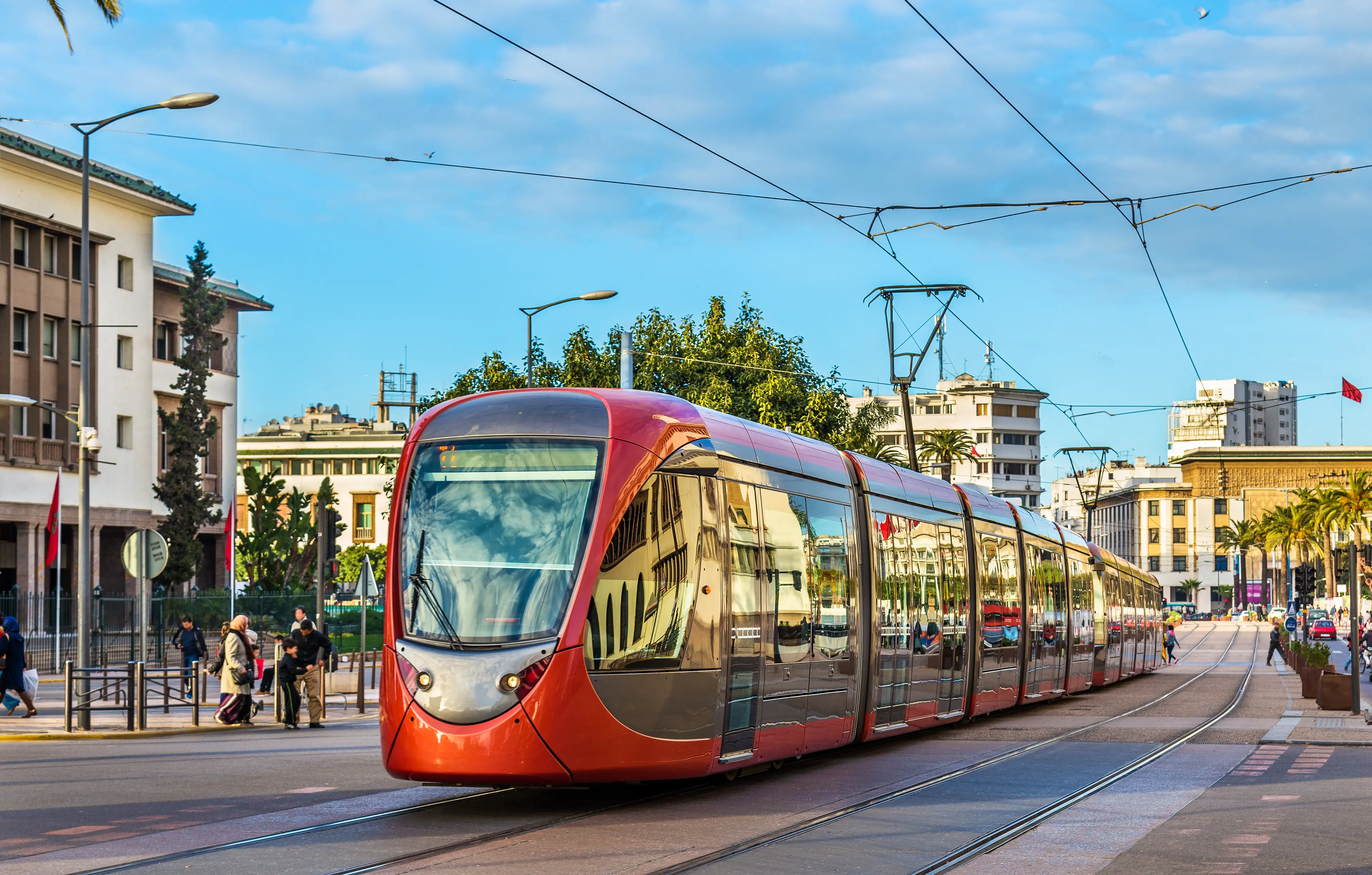
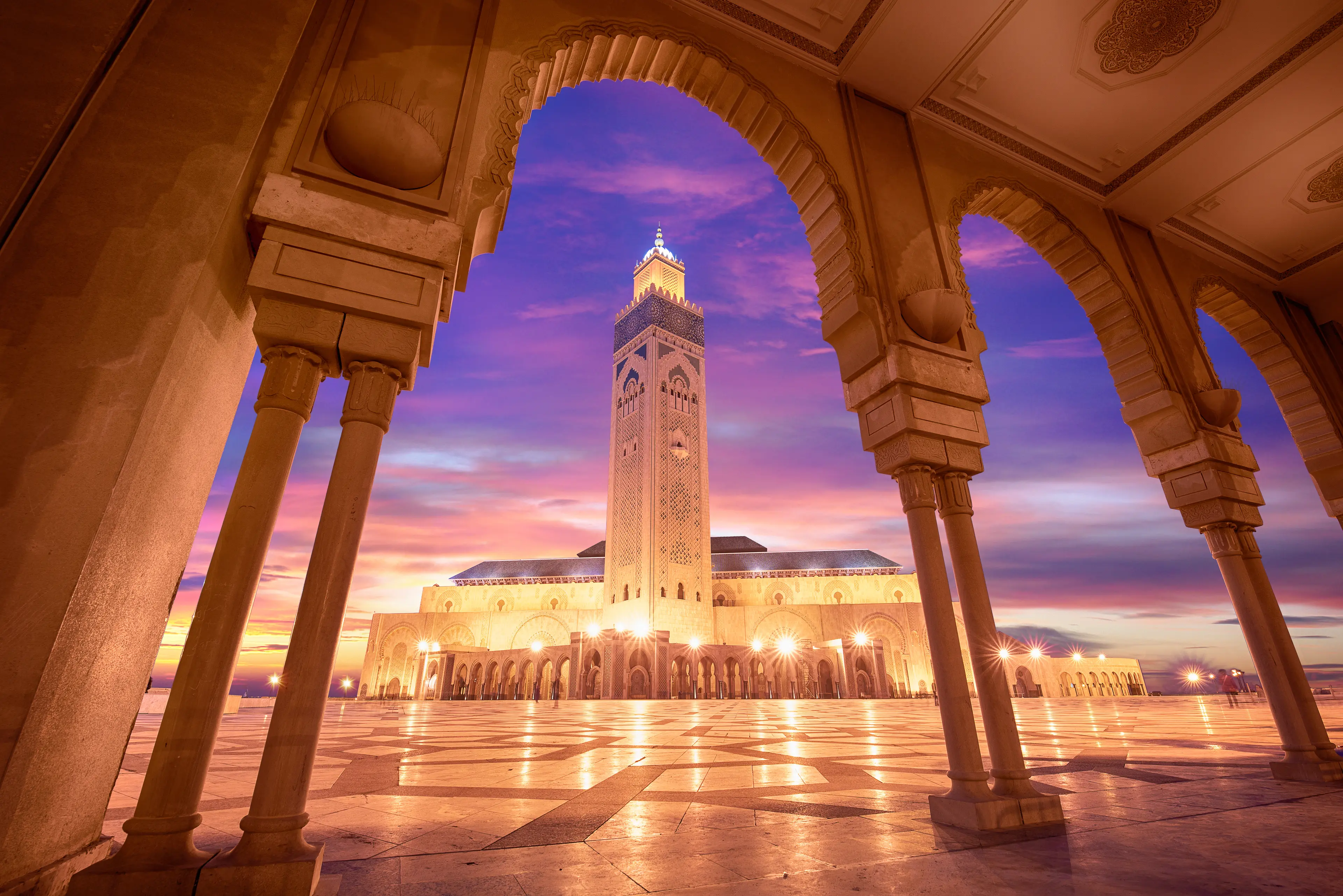
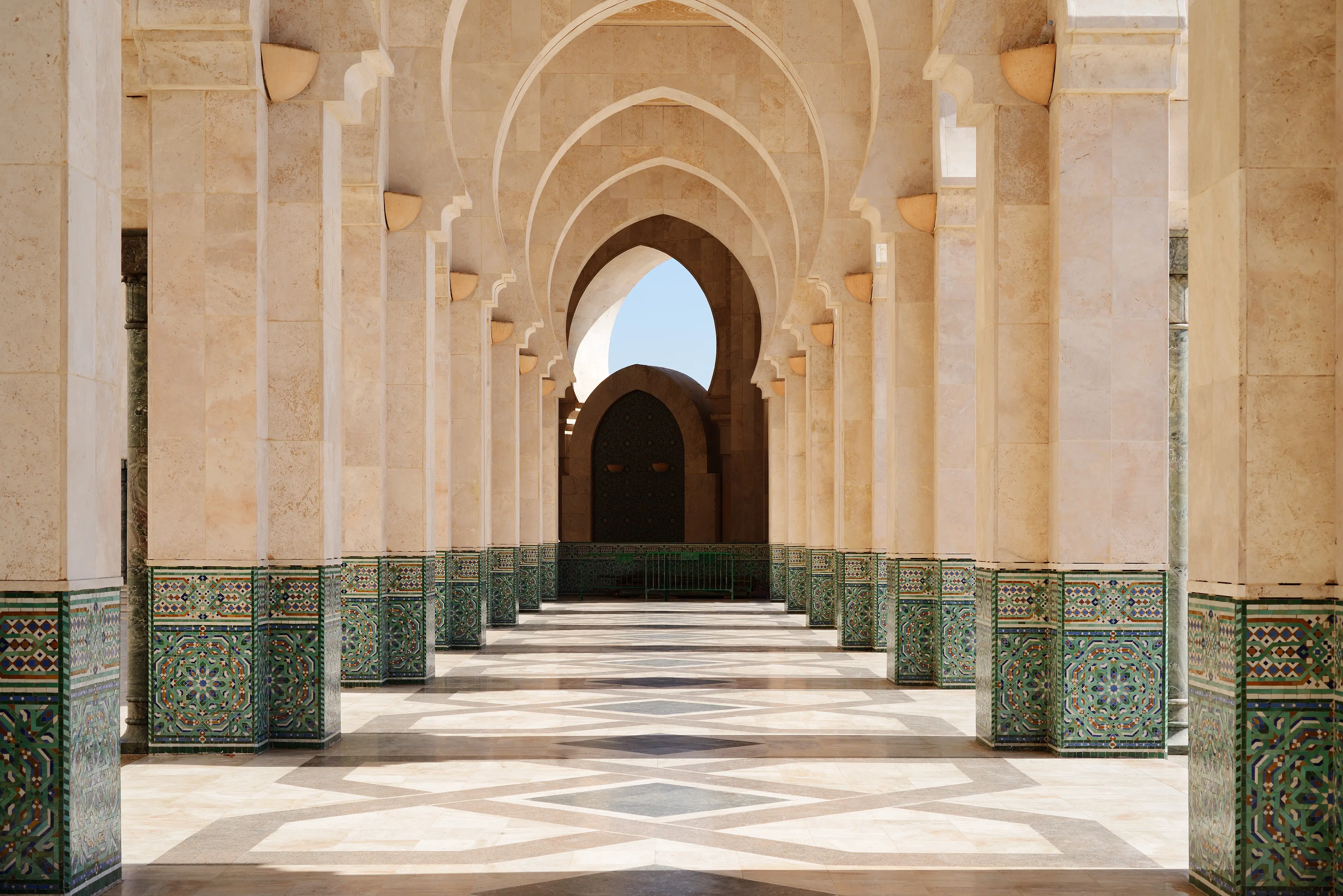
About Casablanca, Morocco
Experience the enchanting blend of modernity and tradition in Casablanca, Morocco's largest city. This bustling metropolis offers a unique mix of contemporary design and historic charm. Visit the majestic Hassan II Mosque, the world's third-largest mosque, boasting exquisite Moroccan artistry. Wander through the vibrant Central Market, a haven for food lovers, or explore the Quartier Habous, a neighborhood showcasing traditional Moroccan architecture. Don't miss the Corniche, a lively beachfront district with numerous restaurants and nightclubs. Casablanca also serves as a gateway to other Moroccan cities, making it a perfect starting point for your Moroccan adventure. Come and immerse yourself in the captivating allure of Casablanca.
3-Day Itinerary
Day 2
Discovering the Mahkama du Pacha and Quartier Habous
Morning
Visit the Mahkama du Pacha, a beautiful Hispanic-Moorish building, which is a feast for the eyes with its intricate stucco and tile work.
Lunch
Have lunch in a local restaurant, where you can try a variety of Moroccan dishes, such as pastilla or harira.
Afternoon
Explore the Quartier Habous, also known as the New Medina. It's a great place to shop for traditional Moroccan goods.
Dinner
Enjoy a traditional Moroccan dinner in a local restaurant. Try the famous couscous or tagine, paired with a glass of Moroccan mint tea.
Evening
End your day with a visit to the Sky 28, a luxurious lounge bar that offers panoramic views of the city.
Day 3
Visiting the Museum of Moroccan Judaism and Villa des Arts
Morning
Visit the Museum of Moroccan Judaism, the only Jewish museum in the Arab world, which offers a unique insight into the history of Moroccan Jews.
Lunch
Have lunch in a local restaurant, where you can try a variety of Moroccan dishes, such as pastilla or harira.
Afternoon
Take a leisurely stroll through the Villa des Arts, a beautiful art deco building that houses a collection of contemporary Moroccan art.
Dinner
Enjoy a traditional Moroccan dinner in a local restaurant. Try the famous couscous or tagine, paired with a glass of Moroccan mint tea.
Evening
End your day with a romantic walk along the Ain Diab Corniche, enjoying the cool sea breeze and the city lights.
Attractions in Itinerary (7)

1Hassan II Mosque
One of the largest mosques in the world, featuring a 210m high minaret and a stunning interior of intricate mosaics.

2Old Medina
The historic heart of the city, featuring narrow winding streets, traditional markets, and historic buildings.

3Ain Diab Corniche
Ain Diab Corniche is a vibrant beachfront district known for its outdoor cafes, fast-food chains, and high-end seafood restaurants. It's also a popular spot for surfing and swimming, with numerous beach clubs lining the shore.

4Mahkama du Pacha
Mahkama du Pacha is a stunning example of Moorish architecture, with its intricate stucco work, carved wooden ceilings, and ornate tile work. This administrative building, which is still in use, is open to the public and offers guided tours.

5Quartier Habous
A charming neighborhood known for its French colonial architecture, traditional Moroccan craft shops, and bustling marketplaces.

6Museum of Moroccan Judaism
The only Jewish museum in the Arab world, showcasing the history, religion, traditions and daily life of Jews in Morocco.

7Villa des Arts
An art museum housed in a beautiful villa, showcasing a wide range of modern and contemporary Moroccan and international art.
Local Food and Drinks (11)

Couscous
A traditional Moroccan dish made from semolina and served with meat and vegetables. It's a staple in Casablanca and is often enjoyed during family gatherings and celebrations.

Tajine
Named after the earthenware pot it's cooked in, Tajine is a slow-cooked stew that can be made with a variety of ingredients, including meat, poultry, fish, and vegetables. It's a common dish in Casablanca and throughout Morocco.

Pastilla
A savory pie made with layers of thin pastry filled with meat (usually pigeon or chicken), almonds, and spices, then topped with powdered sugar and cinnamon. It's a traditional dish in Casablanca and is often served at weddings and other special occasions.

Harira
A hearty soup made with lentils, chickpeas, tomatoes, and meat, often served with a lemon wedge and dates. It's a popular dish in Casablanca, especially during the month of Ramadan.

Mint Tea
A traditional Moroccan drink made from green tea and fresh mint leaves, often sweetened with sugar. It's commonly served in Casablanca and is a symbol of Moroccan hospitality.

Zaalouk
A delicious eggplant and tomato salad, often served with fresh bread. It's a common appetizer in Casablanca and throughout Morocco.

Sardines
Sardines are a staple in Casablanca, often grilled or fried and served with a spicy chermoula sauce.

Rfissa
A traditional Moroccan dish made with shredded bread or pancakes, chicken, and lentils, served with a flavorful sauce. It's a popular dish in Casablanca, often served during celebrations.

Baghrir
A Moroccan pancake with a unique, honeycomb-like texture, often served with honey or butter. It's a common breakfast food in Casablanca.

Maakouda
A popular street food in Casablanca, these are potato cakes that are often served in a sandwich or as a side dish.

Moroccan Coffee
A strong, flavorful coffee often served with spices like cardamom, black pepper, and cinnamon. It's a popular drink in Casablanca and throughout Morocco.
Best time to visit
The best time to visit Casablanca, Morocco is during the spring (April to June) or fall (September to November). During these periods, the weather is warm and pleasant, perfect for exploring the city's historical sites and enjoying outdoor activities. The summer months can be quite hot, while the winter can be a bit chilly, especially in the evenings. Spring and fall also offer the opportunity to experience local festivals and events.
How to get around
Tramway
Casablanca's tramway system is a popular and efficient way to get around the city. It covers a large part of the city, including major tourist attractions, shopping areas, and business districts. The trams are modern, comfortable, and air-conditioned.
Taxi
Taxis are a common way to get around in Casablanca. There are two types: small, white 'petit taxis' for short trips within the city, and larger, beige 'grand taxis' for longer distances. It's important to ensure the meter is running to avoid overcharging.
Ridesharing
Ridesharing services like Uber and Careem are available in Casablanca. They can be a convenient and cost-effective way to get around, especially if you're not familiar with the city. You can book a ride using the app on your smartphone.
Bus
Casablanca's bus network is extensive, but it can be crowded and less comfortable than other options. It's a cheap way to get around, but it's recommended to have a good understanding of the routes and schedules.
Car Rental
Renting a car can give you the freedom to explore Casablanca at your own pace. However, be aware that traffic can be heavy and parking can be challenging in the city center. It's recommended for those who are comfortable with driving in foreign countries.
Train
Casablanca's train system connects the city to other major cities in Morocco. The trains are comfortable and punctual, making it a good option for inter-city travel. The main train station, Casa Voyageurs, is centrally located and easy to access.
Bicycle
Casablanca has been increasing its number of bike lanes, making cycling a viable option for getting around. Some areas of the city also offer bike rental services.
Walk
Walking can be a pleasant way to explore Casablanca, especially in the city center where attractions are close to each other. However, be aware of traffic and always use pedestrian crossings where available.
Important information
Currencyد.م. MAD
Time zoneUTC 0
Driving sideRight
Emergency phoneAmbulance: 15; Fire: 15; Police: 19
Drinking waterOpt for bottled water
Power sockets
Voltage220 V
Things to know about Casablanca, Morocco as a first time visitor
1
Casablanca is the largest city in Morocco and is not the capital; the capital is Rabat.
2
The official language is Arabic, but French is widely spoken and understood.
3
The local currency is the Moroccan Dirham (MAD). Credit cards are accepted in most places but it's good to have some cash for smaller vendors.
4
Casablanca is generally safe but like any large city, it's important to be aware of your surroundings and avoid less crowded areas at night.
5
The city has a Mediterranean climate with mild, wet winters and hot, dry summers. Temperatures range from 50°F to 80°F (10°C to 27°C).
6
Tipping is customary in Morocco. A 10% tip is generally expected in restaurants.
7
Casablanca is a Muslim city, so it's important to dress modestly, especially in religious sites and traditional neighborhoods.
8
The city is well-served by public transportation including trams, buses, and taxis. However, be aware that taxis often don't use meters, so agree on a fare before starting your journey.
9
Drinking tap water isn't recommended. It's better to buy bottled water.
10
Morocco operates on Western European Time (GMT+1).
11
The electrical standard is 220V and the socket type is E, so you may need a power plug adapter or voltage converter.
12
Casablanca is a bustling city with a mix of modern and traditional Moroccan architecture.
13
The food in Casablanca is a blend of Berber, Arabic, French, and Spanish influences. Don't miss out on trying traditional dishes like couscous, tagine, and pastilla.
14
It's customary to greet with a handshake. However, men and women usually don't shake hands unless the woman extends her hand first.
15
The city is known for its vibrant nightlife with a range of bars, clubs, and restaurants.
16
Bargaining is a common practice in markets and some shops. Don't be afraid to negotiate the price.
17
Casablanca is a busy port city, so it can be quite noisy and crowded, especially during peak hours.
18
Moroccans are generally friendly and hospitable, but it's important to respect local customs and traditions.
19
If you're a non-Muslim, you may not be allowed to enter certain religious sites.
20
Always ask for permission before taking photos of people, especially in more traditional and religious areas.
Basic Arabic to know as a first time visitor
English phrase | Native phrase | Pronunciation | When to use it |
|---|---|---|---|
Hello | Salam | sah-lam | Greeting someone |
Goodbye | Bslama | bs-la-ma | Leaving someone |
Please | Afak | a-fak | Making a request |
Thank you | Shukran | shook-ran | Expressing gratitude |
Yes | Ih | eeh | Agreeing or confirming |
No | La | la | Disagreeing or denying |
Excuse me | Smah liya | sma-lee-ya | Getting someone's attention or apologizing |
I don't understand | Ma fhemtch | ma fehmtch | When you don't understand what was said |
Do you speak English? | Wach katkalem l'anglais? | wash kat-kah-lem lang-lay | Asking if someone speaks English |
Where is the bathroom? | Fen hiya hammam? | fen he-ya ha-mam | Looking for the bathroom |
How much does this cost? | Bshhal hada? | besh-hal ha-da | Asking the price of something |
I'm lost | Rah tayeh | rah ta-yeh | When you're lost |
Can you help me? | Wach yemken lik tsaedni? | wash yem-ken leek tsa-ed-nee | Asking for help |
I'm sorry | Smeht | sme-ht | Apologizing |
Good morning | Sbah lkhir | sbaah el-kheer | Greeting someone in the morning |
Good night | Tsbah ala kheir | ts-bah a-la kheer | Saying goodnight |
Water | Maa | maa | Ordering water |
Food | Taam | taam | Talking about food |
Taxi | Taxi | taxi | Looking for transportation |
Hotel | Fondok | fon-dok | Looking for a place to stay |
Packing List
Clothing
Lightweight clothing
Long pants or skirts
Long-sleeved shirts
Underwear
Socks
Comfortable walking shoes
Swimsuit
Sunglasses
Hat for sun protection
Light jacket or sweater for cooler evenings
Scarf or shawl for visiting religious sites
Toiletries
Travel-sized shampoo and conditioner
Body wash or soap
Toothbrush and toothpaste
Deodorant
Razor and shaving cream
Sunscreen
Lip balm with SPF
Hand sanitizer
Travel-sized laundry detergent
Prescription medications
First-aid kit
Travel documents and essentials
Passport
Driver's license or ID card
Credit and debit cards
Cash in local currency
Travel insurance documents
Hotel and transportation reservation confirmations
Emergency contact information
Guidebook or map
Electronics and gadgets
Smartphone
Charger for smartphone
Universal power adapter
Headphones
Camera
Charger for camera
Portable power bank
Miscellaneous items
Travel pillow
Earplugs and eye mask
Snacks
Reusable water bottle
Books or e-books for leisure reading
Travel-sized umbrella
Ziplock bags for organization
Tissues
Notebook and pen
Weather Conditions
Casablanca, Morocco, is known for its Mediterranean climate, which means it experiences mild, wet winters and hot, dry summers. The city is a great destination to visit year-round, but the best time to visit would be during the spring (April to June) and fall (September to November) when the weather is most pleasant. During the summer months (July to September), temperatures can soar up to 86°F (30°C), so it's advisable to pack lightweight, breathable clothing, sunblock, and a hat to protect yourself from the sun. Despite the heat, this is a great time to visit if you enjoy the beach as the Atlantic Ocean is at its warmest. Winter (December to February) in Casablanca is generally mild with temperatures ranging from 50°F to 63°F (10°C to 17°C). However, this is also the city's rainy season, so be sure to pack a raincoat or umbrella. Despite the rain, winter can be a great time to visit if you prefer cooler temperatures and fewer tourists. Regardless of when you visit, it's always a good idea to check the local weather forecast before your trip to ensure you're packing appropriately. Also, keep in mind that the weather can change quickly, especially in the spring and fall, so it's a good idea to pack layers. Finally, don't forget to stay hydrated, especially during the hot summer months. The dry climate can dehydrate you quickly, so always carry a bottle of water with you.
| Month | Hi / Lo (°C) | Weather Overview |
|---|---|---|
January | 18° / 8° | January is the coldest month in Casablanca, but it's still relatively mild with occasional rain. |
February | 18° / 9° | February is a bit warmer than January, with a slight increase in rainfall. |
March | 20° / 10° | In March, the temperature starts to rise, and the rainfall decreases, making it a good time to visit. |
April | 22° / 12° | April sees a further increase in temperature and a decrease in rainfall, making it an ideal time for outdoor activities. |
May | 24° / 15° | May is a pleasant month with warm temperatures and low rainfall, perfect for exploring the city. |
June | 27° / 18° | June marks the beginning of summer with hot temperatures and virtually no rainfall. |
July | 30° / 20° | July is the hottest month in Casablanca, with high temperatures and no rainfall, ideal for beach activities. |
August | 30° / 20° | August is equally hot as July, with high temperatures and no rainfall, perfect for sunbathing and water sports. |
September | 28° / 18° | September sees a slight decrease in temperature but it's still quite warm, with minimal rainfall. |
October | 25° / 15° | October is a comfortable month with moderate temperatures and a slight increase in rainfall. |
November | 22° / 12° | November sees a further drop in temperature and an increase in rainfall, but it's still a good time to visit. |
December | 19° / 9° | December is a cool month with moderate rainfall, making it a good time for indoor activities. |
Did you know?
Places near by Casablanca, Morocco

Rabat
The capital city of Morocco, known for landmarks like the Kasbah of the Udayas and Hassan Tower.

Marrakech
Famous for its beautiful palaces, gardens, and the Jemaa el-Fnaa square.

El Jadida
A port city on the Atlantic coast, known for its Portuguese Fortified City of Mazagan.

Fes
One of Morocco's imperial cities, known for its well-preserved old city, the medina of Fes.

Meknes
Another of Morocco's imperial cities, known for its historic monuments and sites like the Bab Mansour gate.

Chefchaouen
A city in the Rif Mountains, known for its blue-painted streets and buildings.

Essaouira
A coastal city known for its well-preserved 18th-century seaport fortifications.

Merzouga
A small village in the Sahara Desert, known for its proximity to the large Erg Chebbi sand dunes.

Tangier
A city on the Maghreb coast at the western entrance to the Strait of Gibraltar.

Agadir
A major city on Morocco's southern Atlantic coast, known for its beaches and seaside promenade.